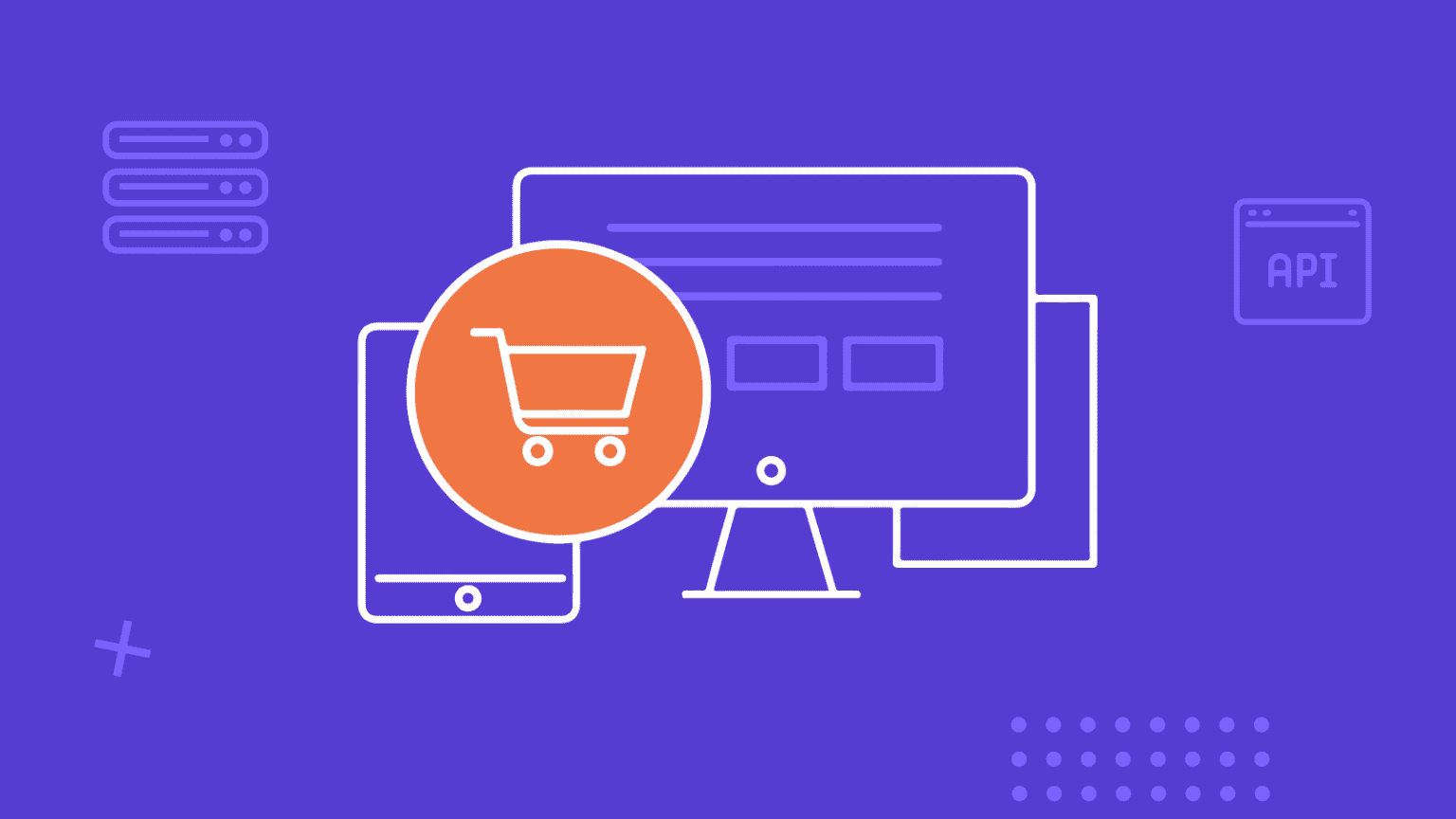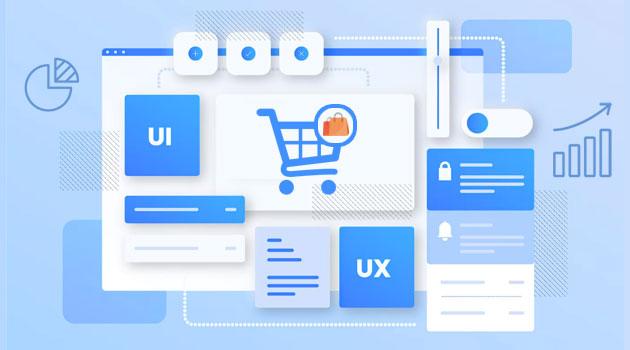How Can a Headless Ecommerce Site Help Your Business?

Driving sales through improved customer engagement and conversions is every business’s top priority. More than 60% of business organizations agree that a headless ecommerce site helps improve engagement and conversions by significant margins.
Better customer engagement allows businesses to build stronger and more meaningful customer relationships. Such relationships increase brand awareness and yield customer loyalty, resulting in repeat sales.
That is one way a business can benefit from having a headless ecommerce site. But there is more, as you will discover in this write-up.
Read along to get our low-down on how a headless ecommerce site can help your business.
The State of Headless Ecommerce Adoption
Headless ecommerce has seen accelerated funding in recent years, with investors allocating more than $1.6 billion in funding recently.
This increased funding reflects a growing interest in headless solutions and investors’ faith in this emerging ecommerce methodology.
A recent survey on the state of headless commerce conducted by Vanson Bourne revealed some interesting insights, including the following:
Of 400 headless savvy respondents, 92% felt that headless technologies facilitate easier delivery of a consistent content approach.
64% said their organizations use a headless architecture, a 25% increase from 2019.
92% believe digital experiences are important and impact the success of business organizations.
Elsewhere, a study by Commercetools found that 74% of businesses believe in adopting emerging ecommerce solutions as essential, and failure to do so will hurt areas of their business.
Salesforce also found that up to 80% of organizations that do not have headless architecture intend to implement it within two years.
These are significant numbers showing how online merchants are going headless. But what is inspiring the headless revolution?
The many benefits of headless ecommerce platforms below should provide valuable insights into why businesses choose this approach over traditional monolithic commerce.
How a Headless Ecommerce Site Can Help Your Business

A headless e-commerce site can provide several benefits for your business by decoupling your online store’s front and back end. In a traditional e-commerce setup, the front-end (user interface) and back-end (database, server, and business logic) are tightly integrated.
In a headless architecture, these components are separated, allowing for more flexibility and scalability. Here’s how a headless e-commerce site can help your business:
Happier customers through enhanced user experience (UX)
A headless approach to building ecommerce stores allows you to create highly customized and interactive user experiences.
The front end of a headless ecommerce store is decoupled from the back end, comprising the core functionalities of the business. This means you can use modern technologies like React, Angular, and Vue.js to build custom user interfaces inspired by specific customer preferences.
Such custom and personalized experiences are dynamic and engaging, leading to greater customer satisfaction.
You can easily carry out targeted A/B tests and implement necessary changes that improve performance. You can also experiment with various front-end variations and enhance the user experience by optimizing specific elements based on data.
This way, your business can deliver meaningful experiences to various customer segments without altering or affecting the server-side or core business functions (business logic, database).
Ecommerce stores built on decoupled platforms tend to load faster, display smoother animations, and offer better user satisfaction overall.
Reduced expenditure through faster development and iteration
Since a headless platform allows development teams to work on the back-end and front-end components separately, they can complete the project much faster.
Changes on the front end do not affect the back end, and vice versa. This means that one team can focus on building the front end while others work on the back end, completing the entire project in nearly half the time.
Once each ‘end’ is complete, they can then communicate through application programming interfaces (APIs).
This way, businesses can deploy the ecommerce store sooner, avoiding costs associated with prolonged development timelines.
Even better, development teams can make necessary changes to the front end or back end independently without affecting the other side.
In a monolithic system where the back and front end are a unit, any change to one side of the platform affects both the front and back end. As such, changes can significantly delay the development process of a new ecommerce solution or lead to downtimes for an existing one.
In a decoupled system, making quick updates to the user interface is a breeze and won’t impact your business’ underlying ecommerce functionality.
Better brand recognition and customer loyalty through Omni-channel consistency
Because you can create multiple front ends for the same underlying ecommerce functionality, creating omnichannel experiences is easier than ever.
All you have to do is use technologies like React, Vue.js, and Angular to build custom user interfaces. In doing so, you can deliver the same experience from a shared back-end functionality to all customer segments across various touchpoints.
Only the front ends will keep changing while the back end remains the same. As a result, customers can enjoy the same core functionalities as they interact with the brand across different interfaces.
Such omnichannel experiences go a long way in eliminating friction, knowledge gaps, and data discrepancies across various customer touch points. For instance, customers can enjoy the same experience when shopping on the web as on mobile apps, in-store displays, and IoT devices.
This is possible thanks to headless ecommerce technology. And the consistency it brings can significantly strengthen the brand and enhance customer loyalty.
Seamless shopping experience during peak periods
Significant increases in sales in online retail stores characterize peak periods. When this happens, the retail platform must work harder than usual to keep up with the increased requests and processing demand.
With headless ecommerce platforms, you can easily scale your site to meet the increased demand. One way to do this is by deploying additional server resources on the back end to handle the increased traffic.
Meanwhile, the front end, where all customer interactions happen, will remain unaffected and unchanged. Therefore, customer experiences remain consistent despite the changes at the back end.
Thanks to this enhanced scalability, a headless ecommerce site will do an excellent job of keeping the customer’s shopping experience seamless during peak periods.
Greater API Economy
The API in a headless ecommerce setup does more than just enable the exchange of data between the front and back end. It allows businesses to use a single headless Content Management System (CMS) with several front ends.
This means you do not have to invest in multiple back ends when using a headless ecommerce system.
A single headless CMS acts as the repository, making its content accessible to various presentation layers via an API. This is different from traditional ecommerce solutions that come with a built-in front end for every back end.
Because a headless backend can serve multiple presentation layers via APIs, businesses can create innovative voice commerce applications, mobile apps, web applications, and other customer interfaces without investing in additional backed infrastructure.
Such interfaces can represent additional revenue streams for a business that uses a headless website.
Reduced vulnerability to malicious attacks and associated business losses
As already noted, the front-end and back-end components of a headless commerce communicate via APIs. This means they are not linked as a unit.
Such an architecture reduces the surface area exposed to malware of the acts of malicious actors. If they target the front-end presentation layer of the ecommerce platform, the backed infrastructure will remain unaffected.
In case of malicious attacks, the decoupled system ensures that the attack only affects one side of the platform.
Streamlined business operations through third-party integrations
Third-party solutions such as data analytics tools, payment gateways, and marketing platforms help complete the business process in your ecommerce ecosystem.
Integrating these essential services into your ecommerce platform allows you to build the customer journey directly into the site. This presents an excellent way to earn and maintain customer trust by keeping them within your business throughout their buying journey.
Having to pass the customer elsewhere during their online shopping due to a lack of integrations can lead to losing valuable leads. This underscores the importance of third-party integrations, which is where a headless ecommerce site excels.
A headless setup allows for easier integration with third-party services such as analytics tools and payment gateways.
This way, a headless ecommerce site can help improve customer engagement by streamlining your business operations.
Easier adaptation to changing trends and user preferences
One of the best aspects of a headless architecture is its future-proofing abilities.
Since the business’s front-end presentation layer is decoupled from the back end, you can easily adopt new frameworks as technology evolves.
The decoupling means that you will not have to overhaul your core business functions or ecommerce infrastructure while introducing those new and necessary front-end frameworks.
This way, you can future-proof your business and be able to adapt to evolving user preferences and changing trends with ease.
A headless approach also makes it much easier to take your business globally with a centralized back-end functionality.
Since you can create various front ends that are independent of one another, you’ll find it straightforward to adapt your ecommerce site for different regions, currencies, and languages.
With such customizations, you can provide localized experiences when and where they become necessary. A headless ecommerce site makes all of this possible while letting you maintain centralized control over your inventory and product offerings.
Increased conversions and ecommerce sales
A headless ecommerce website can increase your conversions and sales in various ways.
For starters, decoupling the front end from the back end leads to faster website loading times. Faster page load speeds mean better user experiences. This, in turn, reduces bounce rates, allowing you to get more leads down your sales funnel.
We have also explained that a headless system offers more personalization and customization. Notice that a whopping 80% of frequent customers only buy from brands that personalize the experience.

Separating the presentation layer from the back end allows you to make necessary changes to the front end more efficiently. You can respond to customer needs and concerns more readily and guarantee customer satisfaction over time, leading to sustained sales.
Thanks to a headless setup, you can also make your brand more recognizable to customers by offering consistent experiences across various touchpoints.
So you notice that the list of ways in which a headless solution can help increase your ecommerce sales can be pretty long. All you need to do is ensure you are leveraging them appropriately to get the most out of your ecommerce website.
Should You Adopt a Headless Ecommerce Platform?
Several benefits come with a headless ecommerce platform. The number of businesses adopting headless solutions is increasing. And since customers enjoy the enhanced experience that comes with headless technology, your options may be limited to going headless or facing stiff competition from businesses with headless ecommerce sites.
The increasing funding for headless ecommerce also shows that investors are considering the technology as inherent to the future of ecommerce.
Therefore, while the decision to adopt a headless site or not remains solely yours, you cannot afford to ignore these benefits of a headless ecommerce site.
How a Headless Ecommerce Site Can Help Your Business: Summary
In this article, we have noted that a headless ecommerce site brings unparalleled flexibility and scalability. But these are not the only benefits of a headless setup.
Going headless leads to increased conversions and sales, future-proofs your business, streamlines your business operations through third-party integrations, makes your online store more secure, leads to better brand recognition, reduces your expenditure, and makes your customers happier overall.
Next, we will break things down further and tackle headless Shopify and how it can benefit your business.
If you wish to take an early lead and learn more about this topic, get in touch with the headless ecommerce experts at Endertech to help you stay ahead of the competition.
